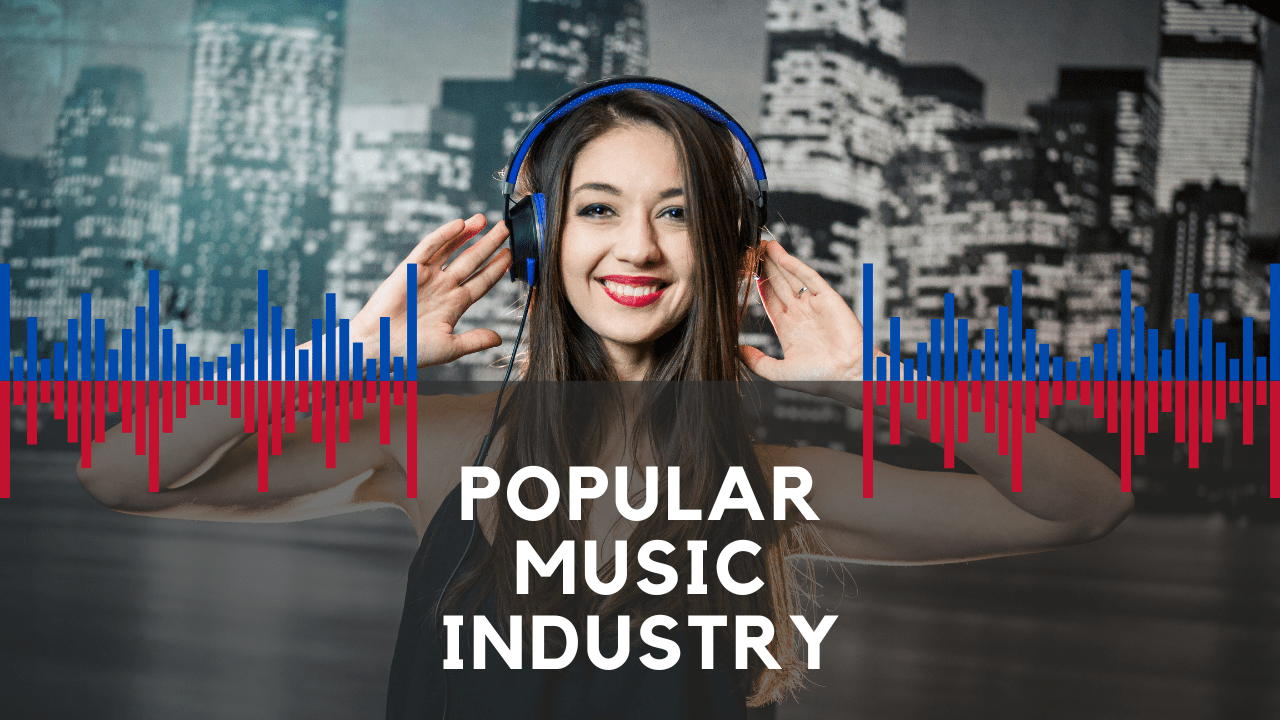The popular music industry has changed a lot over the years. From vinyl records to streaming, the industry has adapted to new technology and cultural shifts. In 2024, the popular music industry is more connected than ever. It is driven by technology, changing consumer habits, and the influence of social media. This blog will explore the key trends in the popular music industry today. We’ll see how artists, producers, and fans are navigating this dynamic landscape.
The Rise of Digital Streaming
Streaming Dominates the Industry
Digital streaming has revolutionized the popular music industry. It has made music more accessible to audiences all over the world. Platforms like Spotify, Apple Music, and Amazon Music are now the main ways people listen to music. Streaming has overtaken physical sales and digital downloads. In 2024, streaming continues to grow. Trends in the popular music industry show a rise in subscription-based services. Streaming is convenient, with personalized recommendations and curated playlists. This has made it the top choice for music lovers.
New Features on Streaming Platforms
Streaming platforms have introduced new features. For example, Spotify’s Countdown Pages let artists engage with their audience before releasing an album. This builds anticipation and drives pre-saves, leading to successful releases. As these platforms keep innovating, they will offer more tools to strengthen the connection between artists and fans.
High-Quality Audio and Exclusive Content
Streaming services have also added high-resolution audio and exclusive content. This caters to audiophiles and dedicated fans. Lossless and spatial audio formats improve the listening experience. Streaming is not just convenient; it’s also a high-quality way to enjoy music. Exclusive releases and early access tracks add a layer of engagement. These features drive subscription growth and deepen fan loyalty.
The Role of Data Analytics
Data analytics plays a crucial role in the popular music industry. Streaming platforms collect vast amounts of data. This data helps understand listener behavior and preferences. It is invaluable for artists and record labels. By analyzing streaming data, artists can learn which songs resonate with their audience. This allows them to tailor their music and marketing strategies. Record labels use this data to spot trends and sign new talent.
The Impact of Social Media on Music Promotion
Social Media as a Music Promotion Tool
Social media is essential for music promotion in the popular music industry. Platforms like Instagram and YouTube give artists direct access to their fans. Artists can share new music, behind-the-scenes content, and interact in real-time. In 2024, social media’s influence on the popular music industry is huge. A single viral video on TikTok can make an unknown artist famous overnight.
The Role of Social Media Management
Managing social media is crucial in the popular music industry. Professional services help artists maintain their social media presence. These services create content and engage with followers. By using these services, artists can reach a broader audience. Their brand remains consistent across all platforms. As social media evolves, it will continue to be a key part of music marketing strategies.
Democratization of Music Discovery
Social media has democratized music discovery. In the past, radio and TV were the main ways to reach a wide audience. Now, social media levels the playing field. Independent artists can gain visibility without a major label. Strong fan communities also boost music promotion. Fans share new releases and create fan art. This increases engagement, streaming numbers, and tour success.
Targeted Music Discovery
Social media algorithms play a big role in music promotion. These algorithms show users content that matches their interests. For musicians, this means their content reaches people who like similar genres or artists. Social media platforms are powerful tools for targeting audiences and driving music discovery.
The Role of AI and Technology in Music Creation
AI in Music Production and Mastering
Artificial intelligence (AI) is making waves in the popular music industry. AI tools are used in music production, mastering, and even songwriting. AI mastering services offer a cost-effective way to polish tracks. This ensures consistent sound quality, helping independent artists compete with major label releases.
AI-Generated Music
AI is also creating new compositions. It analyzes existing music to generate melodies, harmonies, and lyrics. AI-generated music is still new, but it has the potential to revolutionize the popular music industry. Artists are starting to co-create music with AI, blending human creativity with machine learning.
AI in Music Consumption
AI is transforming how we consume music. Streaming platforms use AI for recommendation engines. These engines suggest new songs and artists based on listener preferences. For artists, this means their music can reach listeners who might not have found it otherwise. This expands their audience and boosts their success in the popular music industry.
AI in Music Videos and Visual Content
AI is also changing music videos and visual content. AI-powered tools can create visuals that sync with a track’s beat and mood. This opens up new possibilities for engaging and immersive music videos. Even artists with limited budgets can benefit from these tools. As technology develops, it will play an even bigger role in the creative process within the popular music industry.
The Evolution of Music Distribution
The Shift to Digital Distribution
Music distribution has evolved from physical records to digital formats. In the popular music industry today, digital distribution is the norm. It allows artists to release their music to a global audience with just a few clicks. Services like Deliver My Tune make the process simple, ensuring that music reaches all major streaming platforms. This ease of distribution has democratized the popular music industry. Independent artists can share their music with the world without a major label.
Innovations in Music Distribution
In 2024, music distribution continues to innovate. Platforms are offering more tailored services to meet artists’ needs. For example, distributing Dolby Atmos audio or uploading motion graphics for album covers are new ways the popular music industry is evolving. These innovations provide richer experiences for listeners.
Real-Time Performance Metrics
One of the benefits of digital distribution is real-time performance tracking. Artists and labels can monitor their releases’ success, seeing which platforms and regions generate the most streams. This data helps make informed decisions about marketing strategies, tour planning, and future releases. In the popular music industry, the ability to adapt quickly to trends and audience preferences is key to success.
Direct-to-Fan Distribution
Direct-to-fan distribution models are gaining traction. These models allow artists to sell their music directly to fans through platforms like Bandcamp. This approach gives artists a higher percentage of revenue and fosters a closer connection with their audience. Fans who buy music directly from artists are often more loyal, leading to a stronger fan base.
The Comeback of Physical Formats
The popular music industry is also seeing a resurgence in physical formats. Vinyl records, in particular, have made a comeback. For some fans, collecting vinyl is a way to connect with music on a deeper level. Artists are responding by releasing special edition records and other physical merchandise. While digital distribution is dominant, the interest in physical formats shows the diverse ways people engage with music.
The Influence of Playlists and Curation
The Power of Playlists
Playlists are a powerful tool in the popular music industry. Curated playlists on streaming platforms are a primary way listeners discover new music. Being featured on a popular playlist can significantly boost an artist’s visibility. In 2024, playlist curation remains a major influence in the popular music industry.
Personalized Playlist Offerings
Streaming services are expanding their playlist offerings. They cater to niche audiences and specific moods or activities. This trend towards hyper-personalized playlists helps artists reach listeners who are most likely to enjoy their music. Securing placements on influential playlists is now a key promotional strategy.
Independent Playlist Curators
Independent playlist curators have become tastemakers in the popular music industry. These curators have large followings on platforms like Spotify and Apple Music. They can introduce new music to their audiences and influence listening trends. For artists, getting featured on a popular independent playlist can be a significant career boost.
The Importance of Playlist Placement
Playlist placement is crucial for new releases. The first few weeks after a song’s release are critical for building momentum. Being featured on a high-traffic playlist can generate thousands of streams quickly. This increases the chances of the song being picked up by other curators and added to more playlists.
Radio-Style Playlists
Radio-style playlists on platforms like YouTube and Pandora remain popular. These platforms let listeners create custom stations based on their favorite artists or genres. The platform curates a mix of songs automatically. This appeals to listeners who prefer a more passive music discovery experience.
The Globalization of the Music Industry
Music Goes Global
The popular music industry is more global than ever before. Digital streaming and social media have made music from all over the world accessible. This globalization has led to a blending of musical genres and influences. For example, K-pop has become a global phenomenon, influencing music and fashion trends worldwide.
Cross-Cultural Collaborations
In 2024, artists are collaborating across borders and cultures. These collaborations create unique musical fusions and broaden artists’ reach. The popular music industry reflects and shapes global cultural trends as the world becomes more connected.
Internet Access in Developing Regions
Internet access in developing regions is increasing. More people can stream music, watch videos, and engage with artists online. This opens up new markets for the popular music industry. Artists are reaching audiences in countries where physical music distribution was previously difficult.
Multilingual Releases
Multilingual releases are becoming more common. Artists release songs in multiple languages to reach a broader audience. This trend is strong in regions like Latin America and Asia. By releasing music in different languages, artists can connect with fans in their native language while appealing to international audiences.
The Role of Live Music and Virtual Concerts
Live and Virtual Concerts
Live music is a cornerstone of the popular music industry. It offers artists a way to connect with their audience personally. However, the COVID-19 pandemic accelerated the adoption of virtual concerts. These concerts have become a permanent fixture in the industry. In 2024, we see a hybrid model where live and virtual concerts coexist.
New Opportunities with Virtual Concerts
Virtual concerts offer new opportunities in the popular music industry. They allow artists to reach global audiences without the limitations of physical venues. Virtual concerts often feature interactive elements like chat rooms and virtual meet-and-greets. As technology improves, virtual concerts will become more immersive. Advances in virtual reality (VR) and augmented reality (AR) will play a key role.
Monetizing Virtual Concerts
Virtual concerts have created new revenue streams in the popular music industry. Artists can monetize virtual concerts through ticket sales, exclusive merchandise, and virtual meet-and-greets. These revenue streams are important as traditional sources, like physical album sales, have declined.
Hybrid Events
The popular music industry has embraced hybrid events. These combine live performances with online streaming to reach a broader audience. Hybrid events mix the energy of a live concert with the convenience of virtual viewing. For fans who can’t attend in person, hybrid events offer a great alternative.
Technology in Live Performances
Advanced technology is transforming live performances. From holographic projections to AI-generated visuals, artists are using cutting-edge tech in their shows. This enhances the visual spectacle and offers new ways for artists to express their creativity. As the popular music industry continues to innovate, fans can expect more immersive concert experiences.
The Challenges Facing the Popular Music Industry
Fair Compensation for Artists
The popular music industry faces several challenges. One major issue is fair compensation for artists. Streaming has made music more accessible, but per-stream payouts are low, especially for independent artists. This has sparked debates about more equitable revenue-sharing models.
Copyright and Intellectual Property
Copyright and intellectual property issues are also a challenge. Digital music distribution makes piracy easier, and sampling and remixing raise questions about the rights of original creators. The popular music industry must balance protecting artists’ rights with encouraging creativity.
Market Saturation
The market is saturated with new music, making it hard for artists to stand out. This has increased competition and put more emphasis on marketing and branding. Artists must now be musicians, social media influencers, content creators, and entrepreneurs. Breaking into the popular music industry is becoming more complex.
Mental Health and Artist Well-Being
Mental health and artist well-being are growing concerns in the popular music industry. The pressures of maintaining a public persona, constant touring, and social media demands can take a toll. The industry is starting to recognize the importance of mental health, but more support is needed.
The Future of the Popular Music Industry
Continued Evolution and Innovation
The popular music industry is set for continued evolution. Technology, consumer behavior, and globalization will shape its future. We can expect more personalized and interactive music experiences, driven by AI and emerging technologies.
Fairness and Sustainability
The industry will continue to grapple with fairness and sustainability. Ensuring that artists are fairly compensated while keeping music accessible will be a key challenge. The popular music industry must find a balance between innovation and equity.
Environmental Sustainability
Environmental sustainability is another area of focus. As awareness of the impact of touring and music production grows, the industry will need to adopt more eco-friendly practices. Fans are becoming more conscious of environmental issues and may demand more transparency from artists and companies.
The Rise of Independent Artists
Independent artists will play a bigger role in the popular music industry. With available tools and platforms, artists no longer need major labels to succeed. This shift towards independence will likely continue, leading to a more diverse and inclusive industry.
Cross-Platform Collaborations
Cross-platform collaborations are becoming more common. Music is being integrated with gaming, film, and other forms of entertainment. This trend will likely grow, blurring the lines between different media and creating new opportunities for the popular music industry.
Conclusion
The popular music industry is always changing, driven by technology, culture, and audience tastes. In 2024, the industry is more connected and global than ever. This offers both opportunities and challenges for artists, producers, and fans. By staying ahead of trends and adapting to new technologies, those in the popular music industry can thrive. The future of the popular music industry is vibrant and full of potential.
For further reading, explore these related articles:
- Understanding and Combating Piracy in the Music Industry
- The Ultimate Guide to Music Video Distribution on Apple Music
- Unveiling the Dark Side: Abusers in the Music Industry
For additional resources on music marketing and distribution, visit Deliver My Tune.






